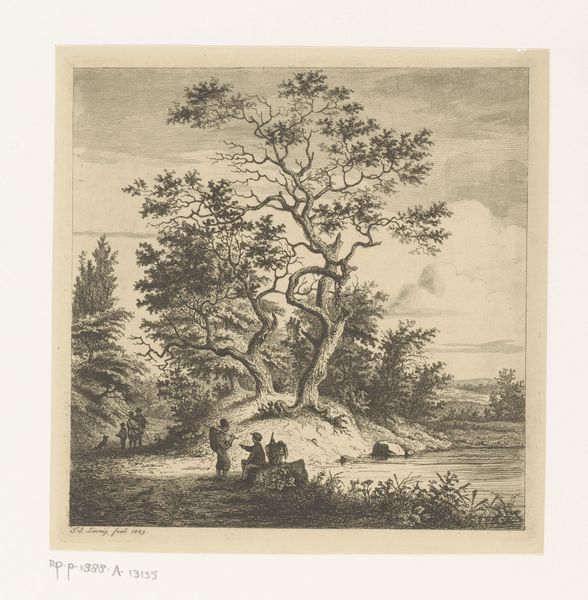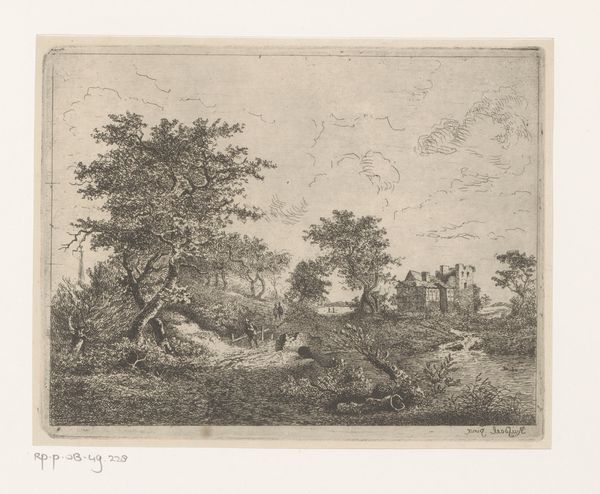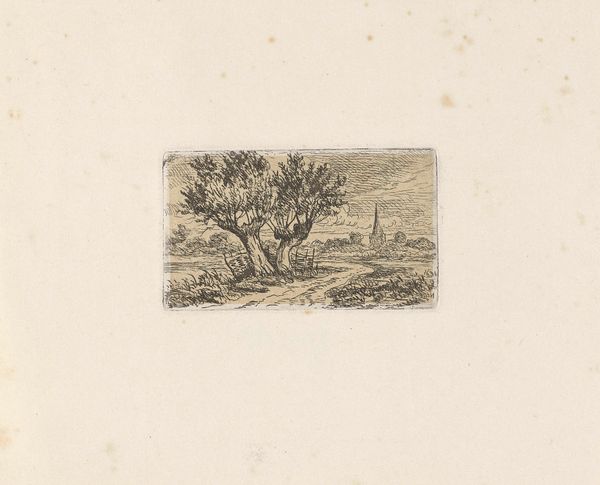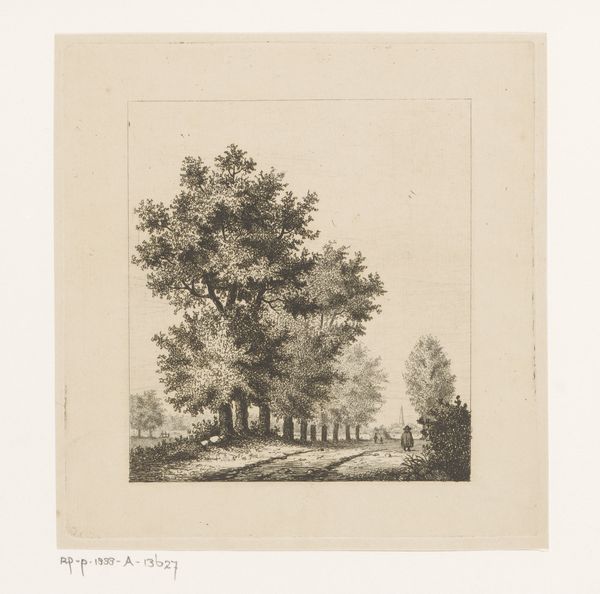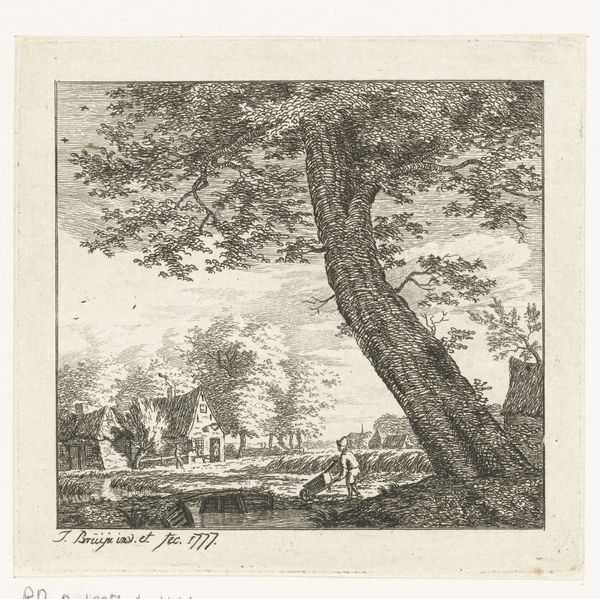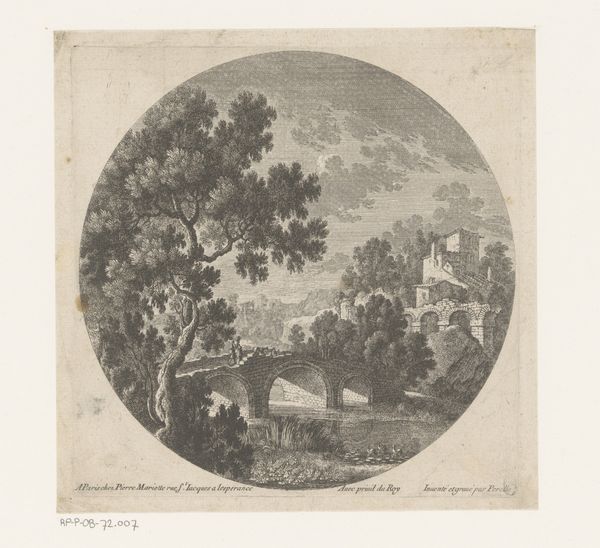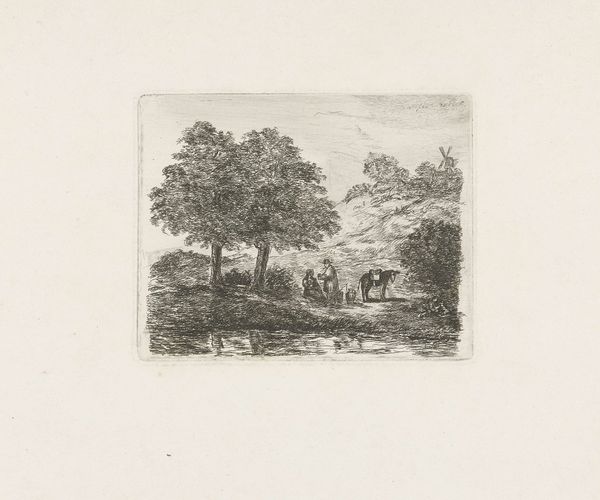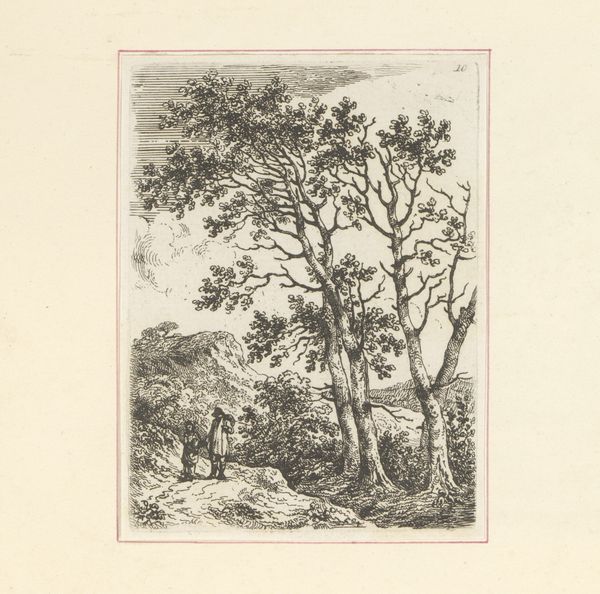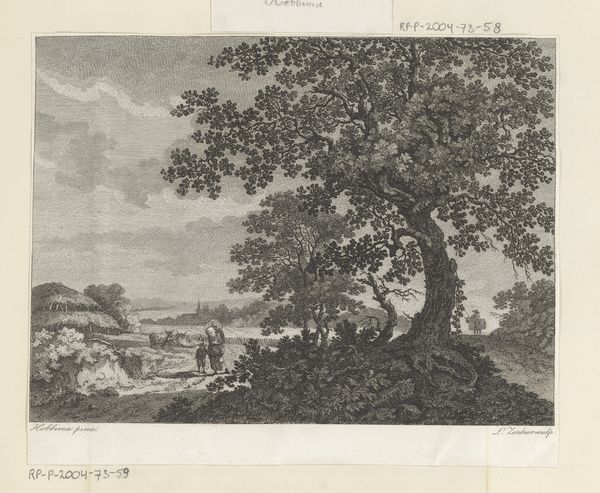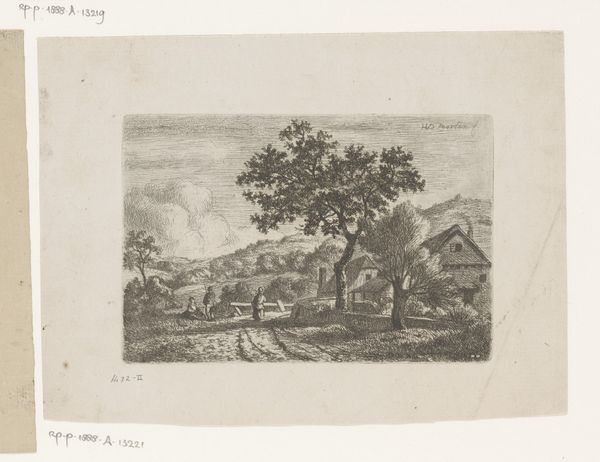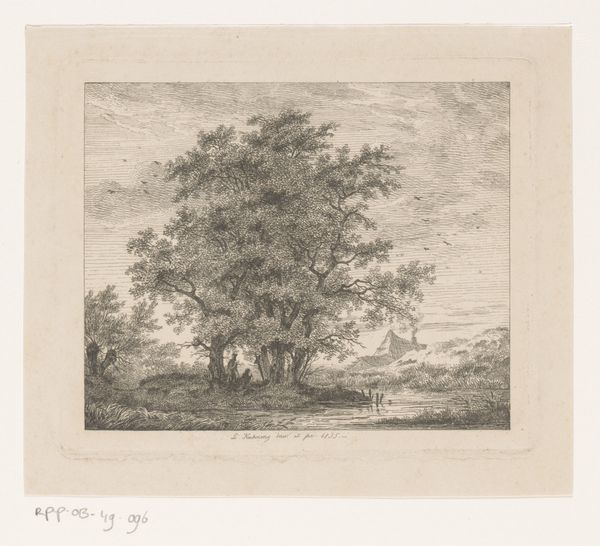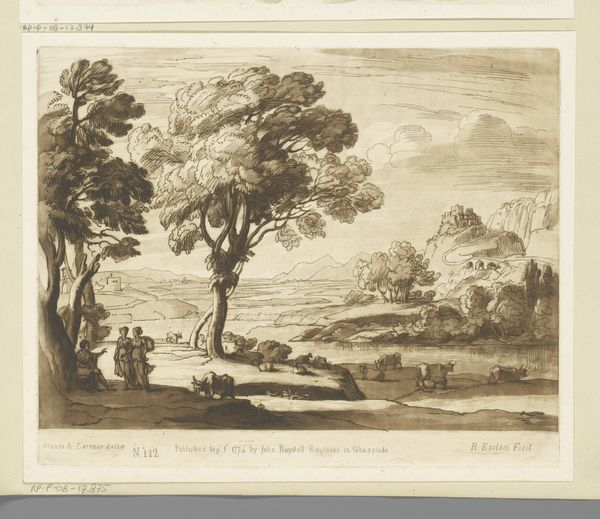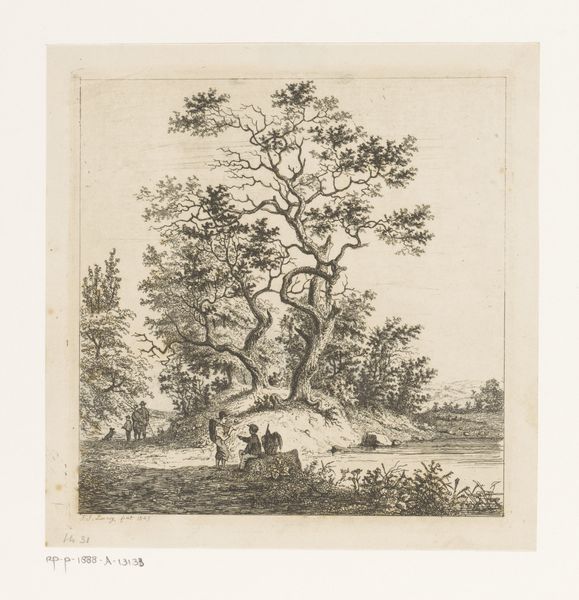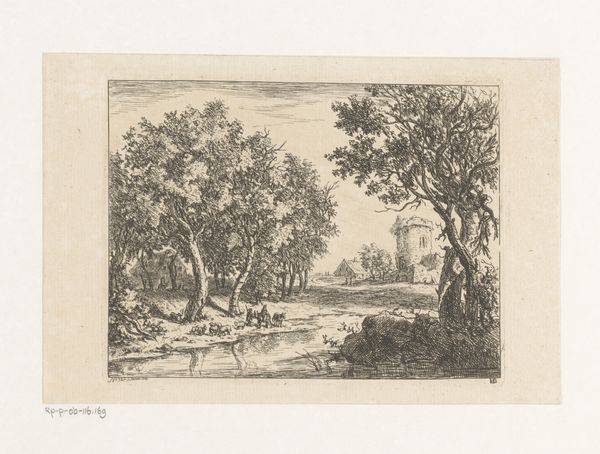
print, engraving
# print
#
landscape
#
river
#
engraving
Dimensions: height 103 mm, width 94 mm
Copyright: Rijks Museum: Open Domain
Jean Théodore Joseph Linnig created this print of a view along the Rhine using etching, a process that democratized image-making in the 19th century. The scene is rendered with a network of fine lines, bitten into a metal plate by acid. Look closely, and you can see how Linnig varied the depth and density of these lines to create a sense of light, shadow, and texture. The fortifications and foliage have a tactile quality, achieved through skilled manipulation of the etching process. Prints like this were relatively inexpensive to produce, making art accessible to a wider audience. The etched line, in particular, became a signature of the era, a counterpoint to the industrial processes that were rapidly changing the landscape itself. It's a reminder that even in the age of mass production, the hand-made and the artisanal continued to hold value, offering a counter-narrative to the relentless march of progress.
Comments
No comments
Be the first to comment and join the conversation on the ultimate creative platform.
